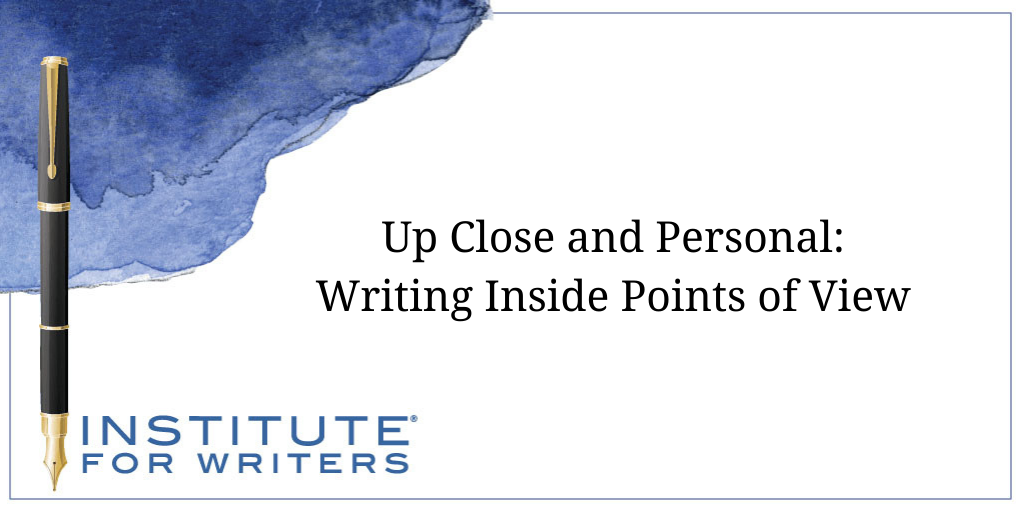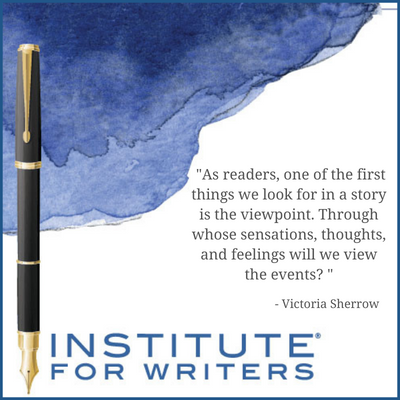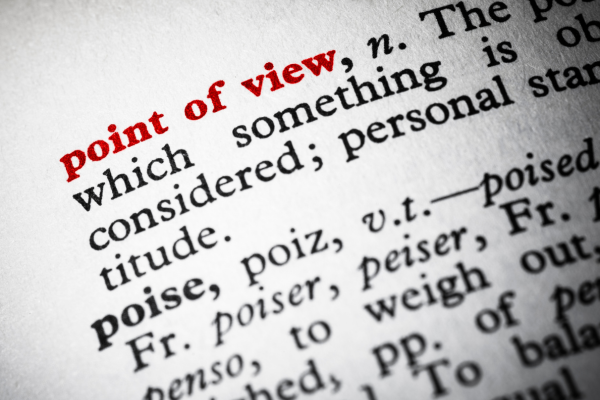
Creating Characters
Character development is an interesting part of writing but may be among the most time consuming and significant in your story.

As readers, one of the first things we look for in a story is the viewpoint. Through whose sensations, thoughts, and feelings will we view the events? Will we step inside just one character’s head or experience multiple viewpoints? Will we view characters up close or from more of a distance, as when the author uses an omniscient or objective perspective?
 The point of view (POV) affects a story’s content, style, and meaning. Which should we choose? In The Fiction Writer’s Handbook, Hallie and Whit Burnett advise writers to ask: “Which point of view gives us most freedom, and which is most likely to add interest and meaning and sympathy to our story?” In Professional Fiction Writing, Jean Z. Owen says the best choice is “the point of view that will display the dramatic episodes of your story to best advantage and give your reader the greatest emotional satisfaction.”
The point of view (POV) affects a story’s content, style, and meaning. Which should we choose? In The Fiction Writer’s Handbook, Hallie and Whit Burnett advise writers to ask: “Which point of view gives us most freedom, and which is most likely to add interest and meaning and sympathy to our story?” In Professional Fiction Writing, Jean Z. Owen says the best choice is “the point of view that will display the dramatic episodes of your story to best advantage and give your reader the greatest emotional satisfaction.”
Suppose you decide that a close inside POV from one character (or just one character at a time) works best for your story. This approach lets you delve deeply into a character’s thoughts and feelings to reduce the distance between reader and character, making it easier to identify with them and share their experiences. Along with this narrative approach, you’ll choose a viewpoint character. These questions can help you decide:
Usually, the protagonist is the viewpoint character, but not always. One famous example is Nick Carraway, the narrator in F. Scott Fitzgerald’s The Great Gatsby. While visiting his cousin Daisy, the female protagonist, Nick meets the mysterious Jay Gatsby. As a newcomer to their upper-class lifestyle, Nick can offer insights that are central to the story.
Once you choose your POV and main character(s), you can decide whether to use a first-person or limited third-person narration. Each approach has its benefits and drawbacks.
First-person stories use the I/me/my/mine perspective, as if a character is talking directly to readers. In a first-person novel, authors can use one character’s POV from start to finish or shift to other single viewpoints. For example, alternating chapters can show first-person narrations from a married couple or multiple siblings, friends, or enemies.
 Benefits:
Benefits:
Benefit AND Drawback:
Drawbacks:
Third-person limited (also called “close” or “deep” third person) narration uses the character’s name and third-person pronouns—he/she, her/his, etc. The author is not a character in the story and does not know what every character is thinking and feeling but does have an inside view of one character. Third-person limited is the most common approach used in contemporary fiction.
 This approach is less “distant” than a third-person omniscient viewpoint. There, the story’s narrator is not a character but knows what they do, say, think, and feel and can thus enter various viewpoints. Louisa Alcott’s Little Women is an example. Even more distant is third-person objective, in which readers see events unfold as if watching a play or movie, drawing their own conclusions about characters’ thoughts and feelings.
This approach is less “distant” than a third-person omniscient viewpoint. There, the story’s narrator is not a character but knows what they do, say, think, and feel and can thus enter various viewpoints. Louisa Alcott’s Little Women is an example. Even more distant is third-person objective, in which readers see events unfold as if watching a play or movie, drawing their own conclusions about characters’ thoughts and feelings.
Benefits:
Drawbacks:
Suppose you want multiple viewpoints in a story, while sticking with one character’s POV at a time? When readers are identifying with a character and “living” events along with them, POV shifts can be jolting, even confusing. As Gary Provost writes in Beyond Style, “In effect, you have put [the reader] in place and are showing her something when suddenly you grab her by the shoulders and spin her around to look at something else.” Provost tells authors to give readers “something in return that is worth the disturbance” such as “an exciting new scene or chapter or some compelling new information.”
If you decide to shift viewpoints, they can be easier to process at either the beginning of a new chapter or scene. To make the shift clear, show the new viewpoint in the first paragraph of a scene, or even the first sentence. Some authors “cue” the reader by using the POV character’s name in each chapter header. To shift viewpoints during a chapter, authors Renni Browne and Dave King advise writers to “end the current scene, insert a linespace, and start a new scene from the new point of view you need.” In a dual viewpoint story, Gary Provost stresses the need to balance both viewpoints, since readers expect “to see into two different minds.”
As you read fiction, ask yourself why the author chose a particular viewpoint and narrative approach. How do these choices affect your involvement in the story? Which POV can engage readers in your story from start to finish?
Victoria Sherrow has published short stories, articles, poetry, and books for diverse age groups. Her books have received starred reviews and been honored by the American Library Association, National Association for the Advancement of Science, and NYPL Best Books for the Teenage, among others. Victoria’s most recent nonfiction book for adults is Encyclopedia of Hair: A Cultural History (ABC-CLIO, 2023). She loves helping her students tap into their experiences, interests, knowledge, and imaginations to create their own stories and books.

Character development is an interesting part of writing but may be among the most time consuming and significant in your story.

Plot can be tricky, and, as a writer, you need to be aware of what makes or breaks plot. Take a look at 10 different things to avoid in your own writing.

Plot is more than just the chain of events within a story. There are so many elements to plot to consider when writing. Let’s dive into those elements.
1000 N. West Street #1200, Wilmington, DE 19801
© 2024 Direct Learning Systems, Inc. All rights reserved.
1000 N. West Street #1200, Wilmington, DE 19801
© 2025 Direct Learning Systems, Inc. All rights reserved.
1000 N. West Street #1200, Wilmington, DE 19801
©2025 Direct Learning Systems, Inc. All rights reserved. Privacy Policy.